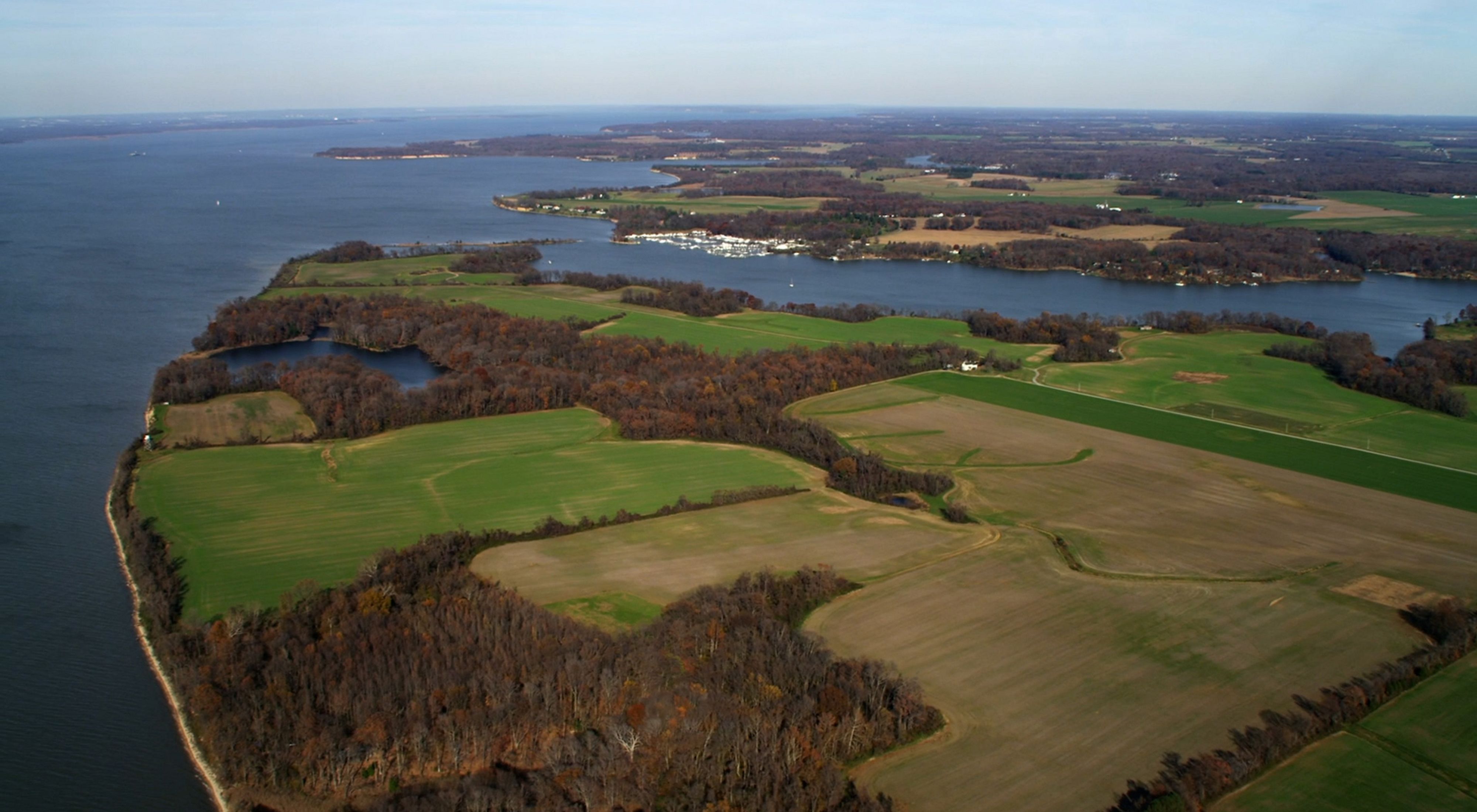New Study Shows Eastern Shore Landowners Support Wetland Restoration
More outreach needed to meet Chesapeake Bay restoration goals.
Media Contacts
-
Matt Kane
The Nature Conservancy
Phone: (323)-898-6510
Email: matthew.kane@tnc.org
A new study from the Delmarva Wetland Partnership has found support for wetland and other habitat restoration among Eastern Shore landowners, but that many also reported not being aware that restoration programs were available for their property and had never been contacted about it before.
The study was conducted via outreach to landowners whose property had been previously identified as a “priority” area through an ecological targeting model identifying areas where wetland and adjacent upland restoration could provide the most benefits without impacting prime agricultural areas. The Delmarva Wetland Partnership consists of representatives from The Nature Conservancy (TNC), Ducks Unlimited, U.S. Department of Agriculture’s Natural Resources Conservation Service (NRCS), U.S. Fish and Wildlife Service and the Maryland Department of Natural Resources.
Wetland restoration is considered critical to successfully meeting Chesapeake Bay cleanup goals. Of the current wetland restoration goal of 85,000 acres, only 9,000 acres of wetlands have been restored on agricultural land in the Chesapeake Bay watershed between 2010 - 2017. The implementation rate of wetland restoration will need to be accelerated significantly to meet the current goal, and it is critical that restoration be sited in the correct places to provide the most ecological benefit.
To support those efforts, the Delmarva Wetland Partnership is demonstrating a new approach to accelerate implementation of wetland restoration. Using an ecological targeting model, the project team determined where restoration would provide the most ecological benefit without hindering agricultural production on prime land. Following that, the team surveyed owners of those priority lands to better understand how they view wetland and other habitat restoration, as well as benefits they would personally like to see from it.
“The ecological targeting work is essential, but not enough in itself. If we are to get wetlands placed on these critical lands, we need to engage the landowners. Social science research helps us understand landowners’ views on wetlands and restoration generally, and this information enables us to craft more effective engagement strategies and programs that will meet their goals and interests.” said Matthew Houser, a social scientist with TNC MD/DC and the University of Maryland Center for Environmental Science, Horn Point Laboratory.
To better understand their views and interests, a survey was sent to over 2,000 priority landowners, of which more than 370 completed and returned the survey. Among the findings:
- A majority of responding landowners (86%) expressed at least some interested in restoring their land, but 65% reported never having been contacted about possible restoration on their property before.
- More than half of landowners said opportunity to see more wildlife would be a “very motivating” factor in whether or not they decide to restore wetlands on their property.
- Landowners are also motivated to restore wetlands to benefit local water quality and for potential financial payments.
- Younger landowners were more likely to be motivated by the ecological benefits of wetland restoration, but also more concerned about potential impacts on their property values.
Steve Strano, a project partner and State Resource Conservationist for the USDA-NRCS, emphasized the impact of this work in saying, “This type of targeted outreach has demonstrated tremendous success in our Pocomoke Floodplain Restoration project, and I believe it will serve to engage landowners on the Delmarva who are interested in supporting improvements in water quality and wildlife habitat. The study has also helped us recognize that we still have a largely untapped group of potential customers that would benefit from our assistance.”
Ducks Unlimited biologist Chase Colmorgen said, “The resources through the Delmarva Wetland Partnership have allowed us to combine our efforts and experiences to assist landowners with wetland programs. Our partnership has already seen success with outreach, implementation and project designs. As we continue our outreach efforts and partnerships, it will be exciting to see how we can further grow and reach more landowners throughout Delmarva in the future.”
“What we’ve learned through this project will be invaluable in helping us accelerate wetland restoration and meet our Chesapeake Bay goals,” said Amy Jacobs, Director of the Chesapeake Bay Agriculture Program at The Nature Conservancy. “Farmers and landowners understand the benefits of wetlands, which means we need to create programs and approaches that work for them. This project is helping create a model for that.”
The Nature Conservancy’s Regenerative Agriculture program works to support a thriving agricultural community where farms provide healthy food, clean water and resiliency to climate change and support a healthy Chesapeake Bay for people and nature.
Additional information about the ecological targeting model and the survey results can be found on Conservation Gateway.
The Nature Conservancy is a global conservation organization dedicated to conserving the lands and waters on which all life depends. Guided by science, we create innovative, on-the-ground solutions to our world’s toughest challenges so that nature and people can thrive together. We are tackling climate change, conserving lands, waters and oceans at an unprecedented scale, providing food and water sustainably and helping make cities more sustainable. The Nature Conservancy is working to make a lasting difference around the world in 77 countries and territories (41 by direct conservation impact and 36 through partners) through a collaborative approach that engages local communities, governments, the private sector, and other partners. To learn more, visit nature.org or follow @nature_press on X.
